- What Exactly is Metal Stamping?
- How Does the Metal Stamping Process Work?
- What are the Different Types of Metal Stamping?
- Advantages and Disadvantages of Metal Stamping
- What Materials Are Commonly Used in Metal Stamping?
- What Industries Rely Heavily on Metal Stamping?
- Dies Used for Metal Stamping
- Design Considerations for the Metal Stamping Process
- Other Processes Used in Metal Stamping
- Conclusion
What Is Metal Stamping? Definition, Process, Types, Benefits
Metal stamping is a cold-forming process that shapes metal sheets into specific forms. It’s an essential technique in creating precision components for various industries. By using high pressure, metal sheets are transformed into parts of desired shapes and sizes.
In this blog, we’ll dive deep into the fascinating world of metal stamping. From its definition to its myriad applications, I’ll share insights and experiences from my journey in the industry.
What Exactly is Metal Stamping?
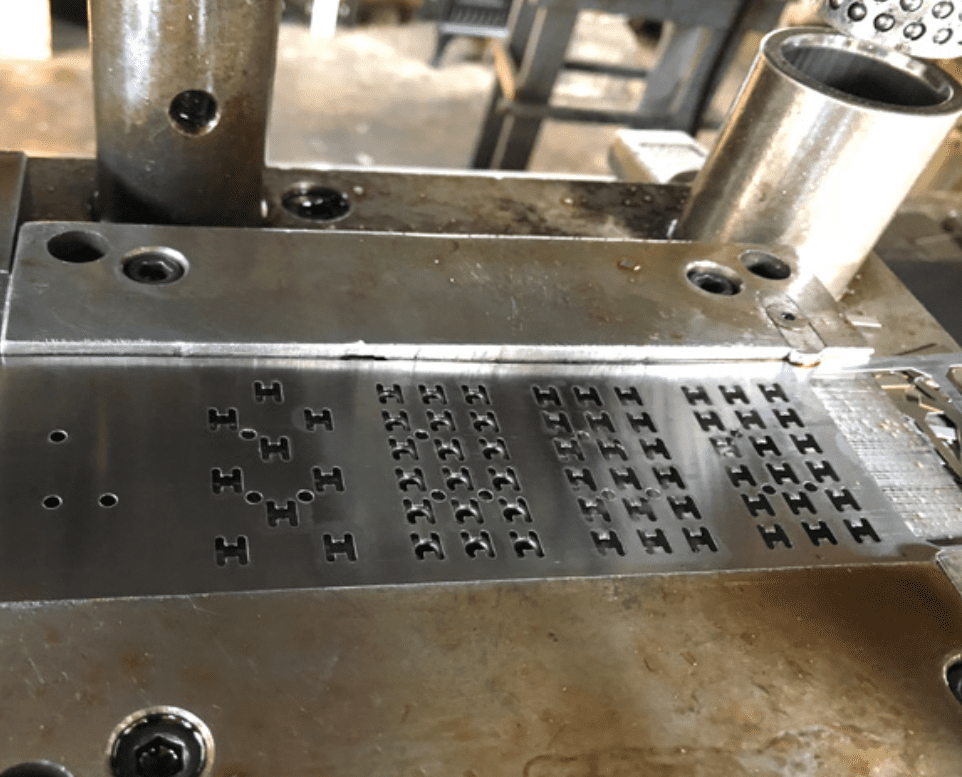
At its core, metal stamping is an industrial process used to convert flat metal sheets into specific shapes. It’s a complex procedure involving various techniques such as punching, embossing, bending, and coining. This process is integral in creating parts that require high precision and repeatability.
At the heart of metal stamping is the die and punch mechanism. Here’s how it works: the metal sheet is placed between the die and the punch. The punch then moves downwards and forces the metal sheet into the die, creating the desired shape.
Its ability to produce high volumes of uniform parts quickly and efficiently sets metal stamping apart from other metal shaping processes. This makes it an indispensable technique in sectors where precision and volume are critical, such as the automotive, aerospace, and electronics industries. By leveraging the latest stamping technology, manufacturers can produce complex parts with tight tolerances and excellent surface finishes.
How Does the Metal Stamping Process Work?
https://youtube.com/shorts/vU8wiRjqncI
The metal stamping process can be likened to an intricate dance between metal, machinery, and meticulous design. It starts with a concept – a part design often developed using sophisticated CAD software. This design is not just a blueprint of the final product but a roadmap for the entire stamping process.
Once the design is finalized, the real magic begins. The first step is to prepare the metal, typically in sheet form. This metal can range from steel to aluminum, brass, or copper, depending on the end use of the stamped part. The chosen metal is then fed into a stamping press. Here, the combination of speed, pressure, and precision transforms the mundane sheet into a part teeming with potential.
The core of the stamping press is the die – a custom-designed tool that shapes the metal. As the press operates, the die and the punch interact, exerting immense pressure on the metal sheet. The metal is sculpted into the desired shape through cutting, bending, and drawing. What’s fascinating is the speed at which this happens. A stamping press can churn out thousands of identical parts per hour, each one a testament to the precision of the process.
What are the Different Types of Metal Stamping?
Progressive Die Stamping
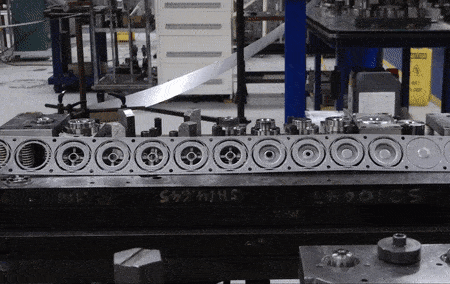
- Progressive die stamping is a marvel of modern manufacturing. It involves using a series of stations, each performing a different operation on the metal sheet as it passes through the stamping press. Imagine a production line where each station is a checkpoint, transforming the metal progressively until the final shape is achieved. This process is highly efficient for large-volume production, as multiple parts can be produced with each press cycle.In progressive die stamping, precision is paramount. The alignment between the die and the press must be exact, as even a minor deviation can affect the quality of the stamped parts. This method is ideal for intricate parts requiring multiple operations such as punching, coining, and bending. It’s a symphony of mechanical precision, where every movement is choreographed to create pieces that are consistent in quality and appearance.
Deep Draw Stamping
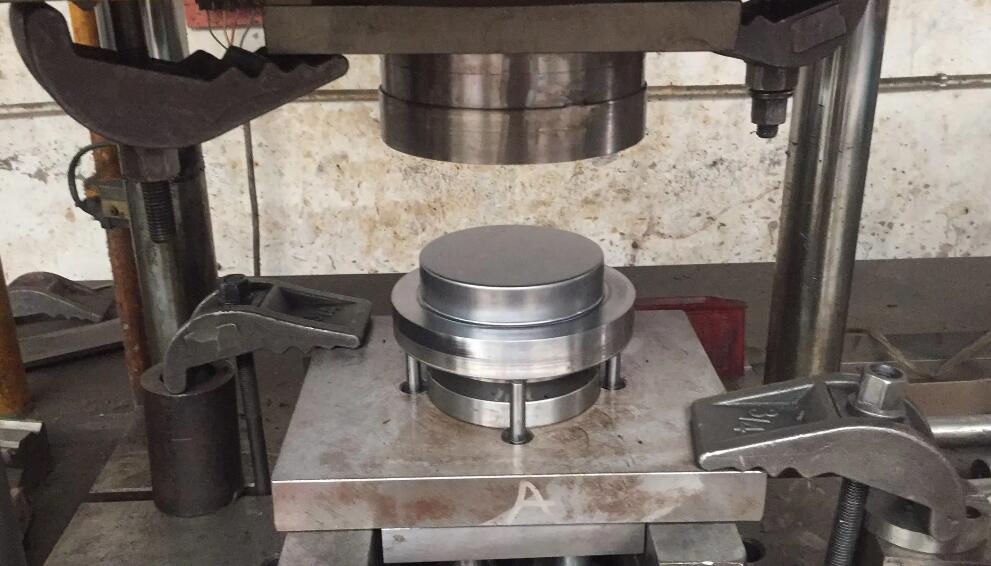
- Deep draw stamping is like the art of origami but with metal. It involves stretching a sheet metal blank into a die to form a deep, hollow shape. Picture a metal cup or a sink – these are typical products of deep draw stamping. The ”deep” part of the name is literal; the depth of the formed part can exceed its diameter, showcasing the process’s capability to create complex, three-dimensional shapes.The beauty of deep draw stamping lies in its ability to produce solid and seamless parts with a high depth-to-diameter ratio. It requires less material than other forming methods, making it a cost-effective choice for large-scale production. This process is commonly used for components that need structural integrity and aesthetic appeal, such as automotive components and consumer electronics enclosures.
Transfer Die Stamping
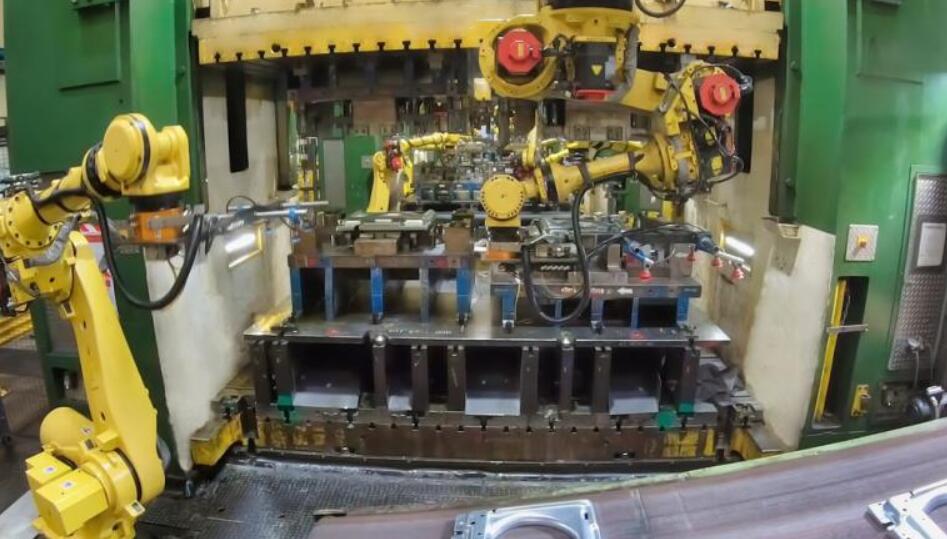
- In this process, a mechanical transport system transfers the part from one die station to the next. Each station performs a different operation – cutting, bending, or forming – much like in progressive die stamping. However, the critical difference is that the part is not connected to the metal strip throughout the process. This detachment allows for more complex part geometries and overcomes some of the limitations of progressive die stamping.Transfer die stamping is ideal for larger, more complex parts that cannot be efficiently manufactured using progressive dies. The process demands precision engineering and careful planning, but the payoff is the ability to produce difficult parts at high speeds.
Four-Slide Stamping (Multi-Slide Stamping)
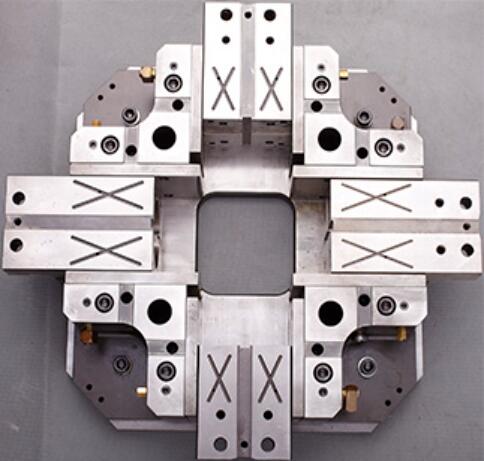
- Four-slide stamping, also known as multi-slide stamping, is a process that allows for intricate cuts, bends, and shapes in a single operation. This technique uses four slides (tools), hence the name, which can manipulate a metal workpiece along multiple axes. This multidirectional approach to shaping metal is what makes four-slide stamping stand out. It can create complex geometries that are difficult or impossible to achieve with traditional stamping methods.This process is particularly well-suited for small, intricate parts and allows for a high degree of customization in part design. The flexibility and efficiency of four-slide stamping make it a favorite for producing clips, brackets, connectors, and many other components in industries where precision and complexity are paramount.
Advantages and Disadvantages of Metal Stamping
| Advantages of Metal Stamping | Disadvantages of Metal Stamping |
| High Efficiency and Productivity | Initial Investment |
| Rapid production of large quantities, leading to higher productivity and lower costs per unit. | Substantial initial costs for tooling and machinery, which can be a barrier for smaller-scale productions. |
| Precision and Consistency | Limitations in Design Complexity |
| Produces parts with consistent quality and tight tolerances, crucial in many industries. | Some extremely intricate designs may not be feasible or require additional processes. |
| Versatility | Tool Wear and Maintenance |
| Suitable for a range of complexities, from simple to intricate parts, across various industries. | Regular maintenance and replacement of dies and punches are necessary, adding to costs and downtime. |
| Cost-Effectiveness | Material Limitations |
| Especially economical for high-volume production, with reduced waste and economies of scale. | Some materials may not be suitable due to properties like brittleness or low ductility. |
| Material Variety | Potential for Quality Issues |
| Compatible with various metals and alloys, offering flexibility in material selection. | Risk of defects such as warping or surface defects, necessitating strict quality control. |
What Materials Are Commonly Used in Metal Stamping?
Steel
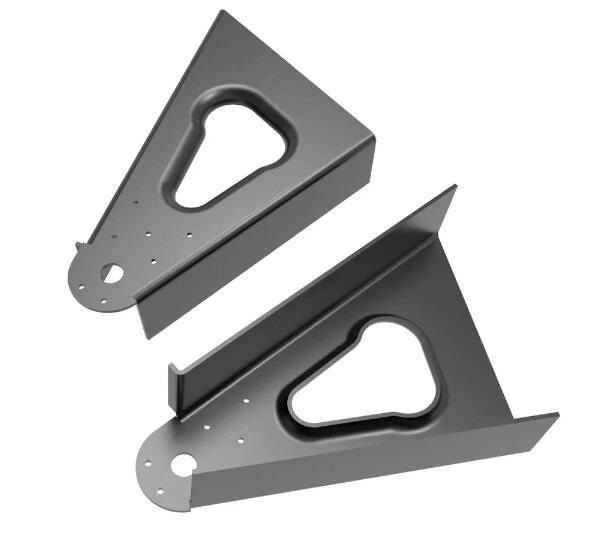
- Cold Rolled Steel (CRS): Grades such as 1018 and 1045 are widespread. CRS is known for its strength and smooth surface finish, ideal for parts requiring tight tolerances.
- Hot Rolled Steel (HRS): Common grades include A36 and A572. HRS is more accessible to shape, making it suitable for larger, less precise parts.
- Stainless Steel: Grades like 304 and 316 are used for corrosion resistance. They are preferred in medical, food, and marine applications.
Aluminum
- Aluminum 1100: This grade is known for its flexibility and is used in applications requiring deep drawing.
- Aluminum 6061: A versatile grade known for its strength and corrosion resistance, suitable for various applications.
- Aluminum 5052: Preferred for applications that require high fatigue strength.
Brass
- Cartridge Brass (C260): Commonly used in electronic components due to its excellent conductivity.
- Naval Brass (C464): Known for its corrosion resistance, making it suitable for marine applications.
Copper
- C110 Copper: Highly conductive, making it ideal for electrical components.
- Beryllium Copper (C17200): Combines strength and conductivity, often used in aerospace and electronic applications.
Titanium
- Grade 2 Titanium: Offers a good balance of strength and flexibility, widely used in aerospace and medical industries.
- Grade 5 Titanium (6Al-4V): Known for its high strength and corrosion resistance, ideal for high-performance applications.
What Industries Rely Heavily on Metal Stamping?
Automotive Industry
- Applications: Production of components like brackets, panels, and electrical connectors.
- Why Metal Stamping?: High-volume production capabilities and the ability to produce sturdy, precise parts that meet strict safety and quality standards.
Aerospace Industry
- Applications: Fabrication of structural components, engine parts, and fasteners.
- Why Metal Stamping?: The need for lightweight, high-strength parts that adhere to stringent industry regulations.
Electronics Industry
- Applications: Manufacturing of connectors, terminals, and enclosures.
- Why Metal Stamping?: Precision and the ability to work with various conductive materials essential for electronic components.
Medical Industry
- Applications: Production of surgical instruments, implants, and braces.
- Why Metal Stamping?: The requirement for precision, biocompatibility, and the ability to produce complex shapes.
Consumer Goods Industry
- Applications: Creation of appliances, tools, and hardware.
- Why Metal Stamping?: Versatility in producing a wide range of products with different sizes and complexity.
Industrial Machinery
- Applications: Components for machines, engines, and heavy equipment.
- Why Metal Stamping?: The demand for durable, high-quality parts that can withstand challenging industrial environments.
Dies Used for Metal Stamping
Creating a die is like sculpting – it requires precision, vision, and skill. Dies are custom-made based on the part design, and crafting them is an art form. They are typically made from high-grade tool steel to withstand the immense pressures of the stamping process. The complexity of a die can vary from a simple, flat shape to a multi-level, intricate design.
Types of Dies

In metal stamping, there’s a variety of dies, each suited for different tasks:
- Single-Stage Dies: These are the simplest form, used for basic operations like cutting or punching. They’re great for straightforward tasks but need more complexity for more detailed parts.
- Progressive Dies: Think of these as a production line within a die. A strip of metal moves through multiple stations, each performing a different operation. By the end, a completed part emerges, having been cut, bent, and formed all in one go.
- Compound Dies: These dies are all about efficiency. They perform multiple operations in a single stroke, making them ideal for parts that require numerous cuts or punches.
The Evolution of Die Design
Advancements in technology have revolutionized die design. Today, we use computer-aided methods (CAD) to create precise and complex dies. This technology allows for intricate designs that would have been impossible or too costly to produce in the past. With CAD, we can simulate the stamping process before the die is even made, saving time and reducing potential errors.
The Heart of Metal Stamping
Dies are at the heart of metal stamping. They determine the quality, precision, and efficiency of the produced parts. Investing in high-quality dies means investing in the quality of the final product. As someone deeply involved in CNC machining and metal fabrication, I can attest to the critical role dies to play in any stamping project’s success.
Design Considerations for the Metal Stamping Process
Material Selection – The Foundation
The choice of material impacts not just the functionality of the part but also the stamping process itself. Consider factors like material strength, flexibility, and corrosion resistance. Ask yourself: will this material withstand the stresses of the stamping process? How will it behave under load in its final application? Choosing the suitable material is the first step in ensuring the success of your stamped part.
Tolerances – Precision is Key
In metal stamping, precision is not just a buzzword but a requirement. Understanding the tolerances your design demands is crucial. Tight tolerances can increase costs, so balance precision with practicality. Keep in mind the capabilities of the stamping process and the equipment you’ll be using. Over-specifying tolerances can be as detrimental as under-specifying them.
Complexity and Feasibility
A complex design might look great on paper, but is it feasible in metal stamping? Consider the limitations of the stamping process. Can your plan be manufactured without compromising its integrity? Sometimes, simplifying a design or breaking it down into multiple components can be the key to faking it.
Cost-Effectiveness
Efficiency and cost-effectiveness go hand in hand in metal stamping. Think about the number of steps required to produce your part. More complex parts with more steps can drive up costs. Look for opportunities to simplify the design without sacrificing quality. Remember, a more straightforward process often leads to a more economical production.
Tooling and Equipment
Your design must be compatible with the available stamping tools and equipment. Custom tooling can be created, but it adds to the expense. It’s often more economical to adapt your design to existing tooling. Collaborate with your toolmakers and engineers to find the best solution.
Prototyping – Test Before You Produce
Before going into total production, create prototypes. Testing a prototype can reveal design flaws that might not appear on a computer screen. It’s a crucial step in ensuring that your part will function as intended in the real world.
Other Processes Used in Metal Stamping
Embossing

Embossing is a process that creates raised or recessed designs on the metal surface. It’s not just for aesthetics; embossing can also enhance the structural integrity of a part. This process commonly adds logos, patterns, or even textural elements to metal parts.
Bending and Forming
Bending and forming are staples in the metal stamping process. They involve manipulating the metal into various angles and shapes. Precision is key here, as the angles and dimensions must meet the design specifications accurately. These processes are integral in creating parts with complex geometries.
Coining
We touched on coining earlier, but it’s worth reiterating its importance. Coining involves stamping a design or engraving into the metal, often used for creating detailed and precise features. It’s a process that demands high precision and control.
Lancing
Lancing is a unique process where a part of the metal is cut and bent without being separated from the main sheet. This technique helps create tabs or vents in part and is a prime example of the ingenuity within metal stamping.
Drawing
Drawing is crucial for making deep or shallow parts from flat sheets. The process involves pulling the metal into a die to create a shape like a cup or a shell. It’s essential for making components that require a certain depth, like casings and containers.
Blanking
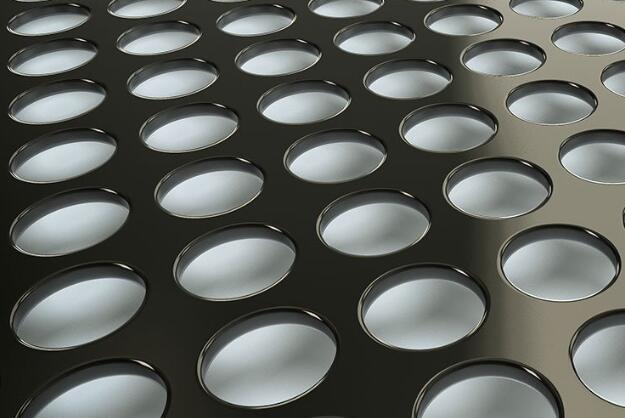
Blanking is cutting the initial piece out of a larger metal sheet. This step is fundamental as it sets the stage for all subsequent stamping operations. Precision in blanking is crucial to ensure the remaining processes work on a piece that conforms to the required dimensions and shape.
Piercing
Piercing involves cutting holes or designs into the stamped part. It’sIt’s often done in tandem with blanking and can be used to create intricate patterns or functional features like screw holes or slots.
Conclusion
Are you ready to start your metal stamping project? Contact us at [email protected] or visit our website at www.worthyhardware.com. Let’s discuss how we can bring precision and efficiency to your next project.

